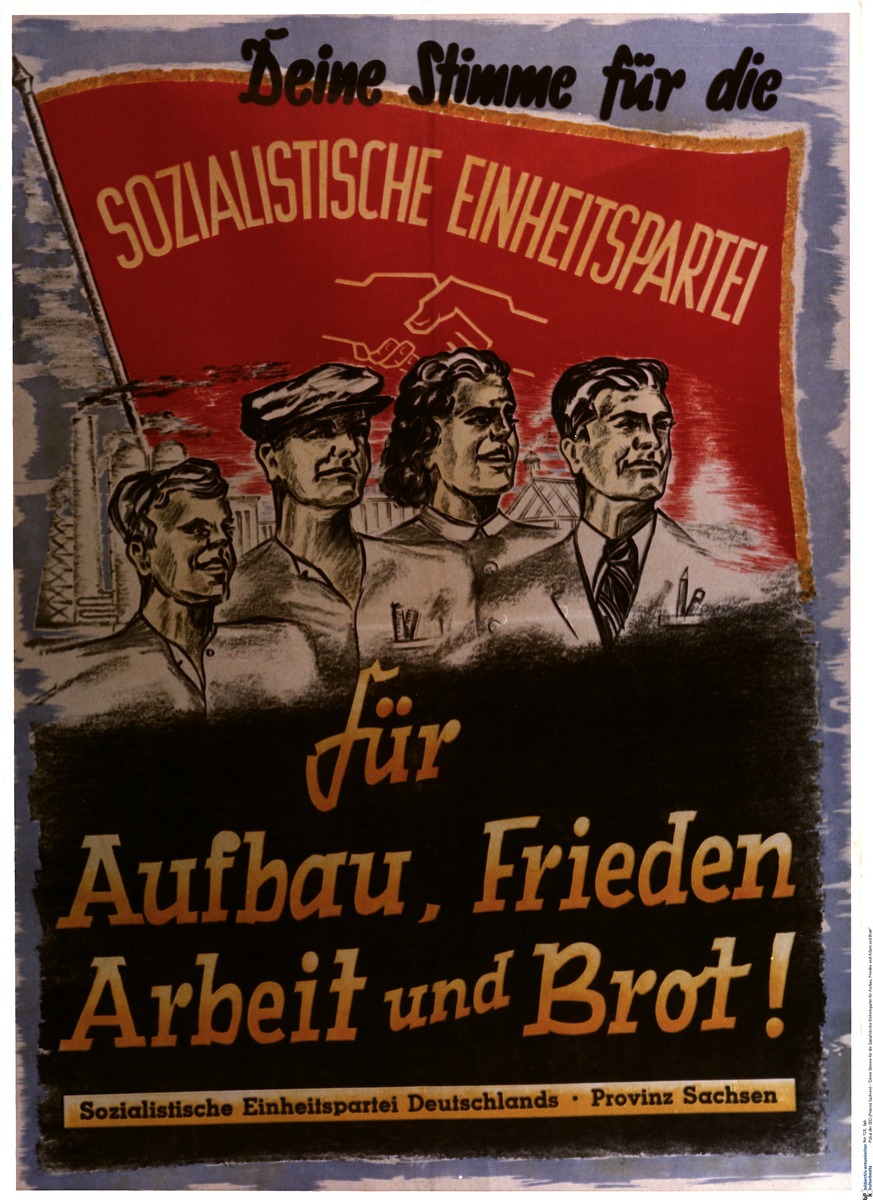Abstract
After the April 1946 merger of the German Communist Party
[Kommunistische Partei Deutschlands
or KDP] and the Eastern SPD, the newly formed SED expected a clear
majority in the communal, regional, and state elections scheduled for
September and October 1946, in the Soviet occupation zone. Massive
discrimination against the bourgeois parties CDU and LPDP helped the SED
win 58% of the vote in the communal elections, and slightly more than
50% percent in the regional assembly elections, but it failed to secure
an absolute majority in the state parliament
[Landtag] elections. The SED’s
performance was particularly disastrous in Berlin, where the SPD still
ran for election independently: the SED received only 19.8% of the vote
and thus trailed the Eastern CDU, while the SPD received almost 49% of
the vote, clearly winning the election.
Below is an SED poster for the elections in the province of Saxony.
It reads: “Your Vote for the Socialist Unity Party for Reconstruction,
Peace, Work, and Bread!”
